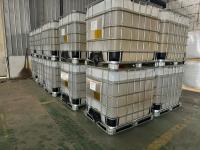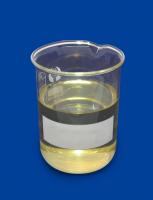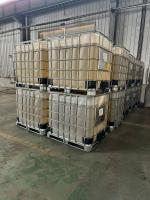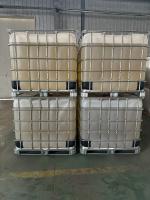Our Products
Product Center / Polyamine Floquat FL2250 equiavlent model can be replaced by Polyamine-FL2250

Floquat FL2250 is a proprietary polyamine-based liquid coagulant manufactured by SNF, a global leader in water-soluble polymers. This cationic polymer solution is primarily designed for use in water treatment applications, specifically where rapid and effective coagulation and flocculation of suspended particles is required.
As a polyamine, Floquat FL2250 contains positively charged amine groups, which provide it with strong affinity for negatively charged contaminants in water, such as clay, silt, colloids, organic matter, and dyes. Due to its versatile and fast-acting coagulation performance, Floquat FL2250 plays a critical role in a variety of municipal, industrial, and mining water treatment operations.
This detailed discussion outlines the main application of Floquat FL2250, with a primary focus on water clarification, sludge dewatering, color removal, and industrial wastewater treatment.
1. Primary Application: Industrial Wastewater Treatment
The main application of Floquat FL2250 is in industrial wastewater treatment, where it functions as a primary coagulant or coagulant aid to remove suspended solids, reduce turbidity, and facilitate effective solid-liquid separation.
1.1 Mechanism of Action
Floquat FL2250 works through a charge neutralization mechanism:
-
Suspended particles in wastewater often carry negative surface charges that cause them to repel each other and remain dispersed.
-
When Floquat FL2250 is added, its positively charged amine groups bind to the negatively charged particles.
-
This neutralization destabilizes the suspension and allows particles to aggregate into larger flocs.
-
These flocs settle quickly or can be easily separated via filtration or flotation.
This makes Floquat FL2250 especially effective for clarifying turbid water, removing fine solids, and preparing sludge for dewatering.
2. Industry-Specific Applications
2.1 Mining and Mineral Processing
In the mining industry, Floquat FL2250 is extensively used for:
-
Tailings treatment: Clarifies water from tailings thickeners and ponds, allowing water to be recycled in the process.
-
Ore beneficiation: Enhances separation efficiency in processes like flotation and gravity separation.
-
Thickener performance: Increases settling rate and improves underflow density in thickeners used in copper, gold, iron, and coal operations.
Its fast action and compatibility with other reagents (e.g., anionic flocculants) make Floquat FL2250 ideal for improving process water recovery and reducing environmental impact in mining.
2.2 Textile and Dyeing Industry
The textile industry generates wastewater that is rich in:
-
Color (from dyes)
-
Suspended solids
-
Surfactants
-
Chemical oxygen demand (COD)
Floquat FL2250 is widely applied in this sector to:
-
Remove dyes and color bodies, particularly anionic dyes such as reactive and direct dyes.
-
Clarify wastewater before it enters biological treatment or is discharged.
-
Reduce chemical load on downstream treatment units such as membranes or aerobic digesters.
Its strong affinity for dye molecules makes Floquat FL2250 a preferred coagulant in color removal systems.
2.3 Pulp and Paper Industry
In the pulp and paper sector, Floquat FL2250 serves in several treatment steps:
-
Clarification of white water to recover fibers and fines.
-
Treatment of backwater streams containing high suspended solids.
-
Conditioning of sludge for improved dewatering in presses or centrifuges.
By enhancing floc strength and dewaterability, it reduces operational costs and improves water reuse efficiency.
2.4 Oil & Gas and Petrochemical Industry
In oilfields and petrochemical plants, wastewater often contains:
-
Oil and grease
-
Suspended solids
-
Chemical additives
Floquat FL2250 is used for:
-
Oil-water separation: Helps coalesce oil droplets for efficient removal by dissolved air flotation (DAF) or separators.
-
Produced water treatment: Improves clarification and reduces residual hydrocarbons.
-
Injection water treatment: Ensures clear water free of solids for reinjection purposes.
Its performance in harsh, oily environments has made Floquat FL2250 a valuable chemical in upstream oil and gas water treatment.
3. Sludge Dewatering and Thickening
Floquat FL2250 is also applied in sludge dewatering, especially as a pre-coagulant before adding flocculants such as high molecular weight polyacrylamides.
In this application:
-
It improves sludge structure, enhancing the formation of strong, dewaterable flocs.
-
It increases solids capture in belt presses, centrifuges, and screw presses.
-
It reduces moisture content in the final sludge cake, lowering hauling and disposal costs.
Used in conjunction with anionic flocculants, Floquat FL2250 is key to achieving efficient sludge volume reduction.
4. Color and Turbidity Removal in General Water Treatment
In general water clarification processes, Floquat FL2250 is employed in:
-
Clarifiers
-
Settling tanks
-
Filtration pre-treatment
It is especially effective in water with:
-
High turbidity
-
Organic color
-
Algae or fine particulates
In these settings, it can either replace or supplement inorganic coagulants (e.g., alum or ferric chloride), offering the advantage of:
-
Faster settling rates
-
Less sludge production
-
Reduced coagulant dose
-
Lower residual metal content in effluent
5. Advantages of Using Floquat FL2250
-
✅ Fast coagulation with minimal dosage
-
✅ Low sludge volume, reducing disposal costs
-
✅ Broad pH tolerance, effective in both acidic and alkaline waters
-
✅ Compatible with other flocculants, including polyacrylamide
-
✅ Highly effective on color and COD, particularly in textile and dye wastewater
-
✅ Improves clarity, allowing better water reuse and regulatory compliance
These benefits translate into lower operational costs, improved plant performance, and reduced environmental footprint.
6. Application Guidelines
To use Floquat FL2250 effectively:
-
Dilute to 0.5–1.0% solution prior to dosing.
-
Apply to raw water, wastewater, or sludge streams via metering pumps.
-
Perform jar testing or pilot studies to determine optimal dose, usually ranging from 10 to 100 ppm, depending on the contaminant load and water characteristics.
-
Combine with flocculants or antifoams as needed.
Proper mixing and reaction time are essential for optimal performance.





